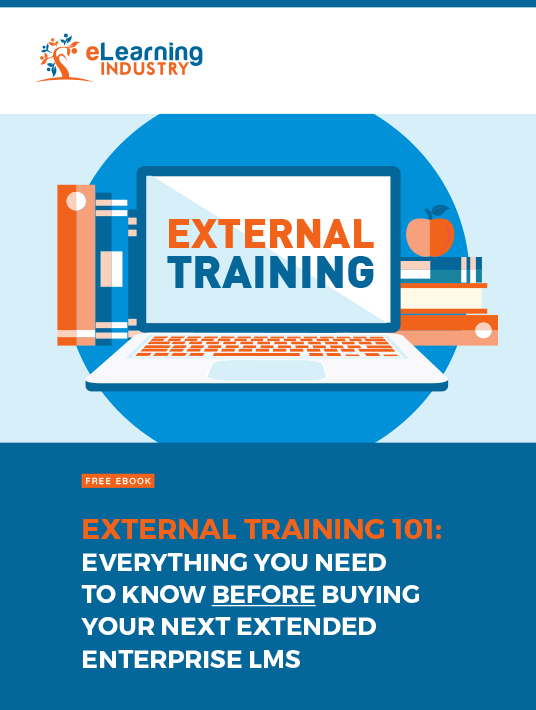6 Factors To Consider When Choosing The Right Extended Enterprise LMS Pricing Model
User experience and the ability to integrate with other third-party software are top priorities when selecting an extended enterprise LMS, but pricing is just as important. Different organizations have different online training requirements. This means that LMS vendors must provide a broad range of pricing options to accommodate their needs. Here are the 6 most common extended enterprise LMS pricing structures to help you create a more accurate budget. Not to mention, find a tool that improves external partner training ROI and maximizes resource allocation.

1. Locally Hosted Vs. Cloud-Based
Online training software can either be packaged in an "on-premise" model or online. Locally hosted entails the use of localized software through in-house servers. The advantage of packaging online training content is that organizations are able to keep their online training content and systems safe while ensuring effective maintenance and control of their information. All their data is secured on local servers and typically backed up on secondary servers. Thus, there is a reduced risk of online hacks or data breaches.
Cloud-based Learning Management Systems are much more flexible and scalable. They are particularly helpful if your audience is scattered, as online training resources are accessible via the web. There were once concerns that such cloud-based systems are not secure. But with third-party certificates such as HTTPS and SSL, cloud-based Learning Management Systems are safer than ever before. Organizations may not have full control over their software, however many extended enterprise LMS solutions now support full brand integration and customization.
2. Pay Per Registered User
This is a common extended enterprise LMS pricing model. In this format, the client is charged for every employee who is registered on the platform. The organization informs the LMS vendor of how many of its employees or partners will access the tool. Then they will charge them for every employee registered. Keep in mind that you must pay for EVERY registered user, whether they actively take part in the online training or not. This pay structure is ideal for smaller organizations who need a reliable LMS platform for their external and in-house talent, given that there are relatively low start-up costs, and you only pay for a certain number of users.
3. Pay For Every Active User
A blanket extended enterprise LMS pricing model for every registered member may not be ideal if the organization doesn’t have a stable workforce. LMS vendors can instead offer a pricing model where organizations only pay for the members who are active on the LMS platform. In this format, the LMS vendors simply charge your organization for the employees who actually access online training material on the extended enterprise LMS rather than the number of registered members. If your company has 100 employees registered on the extended enterprise LMS and only 50 of them access online training courses in a month, you only pay for those 50. It’s important to clarify the LMS vendor’s definition of “active user”. Some may regard it as any partner who logs into the LMS within a 30-day time period while others only count users who actively participate in online training activities or courses.
4. Pay Per License
This extended enterprise LMS pricing model allows a client to pay a one-off fee for unlimited access to the software. Typically, this is based on a monthly or annual fee structure. Once the license expires, you must renew in order to maintain your LMS privileges. There is no limit as to the number of users who can access the online training content once the license fee is paid. This makes it a great option for larger organizations or those who foresee significant growth in the future. For example, you only have 20 external partners now, but you plan to expand to 100 in the next quarter. There are generally two licensing options to choose from: perpetual and annual. For perpetual licenses, you purchase the product outright and there’s no need to worry about renewals. That said, you will probably have to invest in a new tool eventually to keep up with modern tech.
5. Pay Per Module Or Course
Your online training content may be divided into different online training courses. As a result, it may be more beneficial to pay for individual online training courses or modules in your online training program. For example, there are 500 external partners who need to access your online training content. Paying for individual users may be out of your price range. However, you can opt for a flat per-course fee that grants unlimited access to your top talent.
6. Free And Open Source
Then there are free and open source options. The latter is a more fluid solution that involves an open source code which any organization can modify. "Free" may be music to your ears, but there are usually some strings attached. For instance, you typically must have some degree of programming knowledge. You have to customize the code to tap into the power of LMS personalization. There is also another sub-category to consider, which is freemium. In this case, you don’t pay for the software but you will have to foot the bill for upgrades and updates, as well as product add-ons.
Organizations want value for money when acquiring a new extended enterprise LMS. As such, LMS vendors offer different extended enterprise LMS pricing plans to suit different needs. To find the one that’s right for you takes careful training analysis and a bit of foresight. This way you will invest in an extended enterprise LMS that scales with your organization and offers the best returns.
Want to learn more about the possibilities of an Extended Enterprise LMS? Download our free eBook External Training 101: Everything You Need To Know BEFORE Buying Your Next Extended Enterprise LMS to learn about the benefits of extended enterprise LMSs for start-ups and SMBs. This informative eBook also features top tips to get external partners excited about your extended enterprise LMS launch, and how to use your new LMS platform for customer online training and broaden your profit margin.








